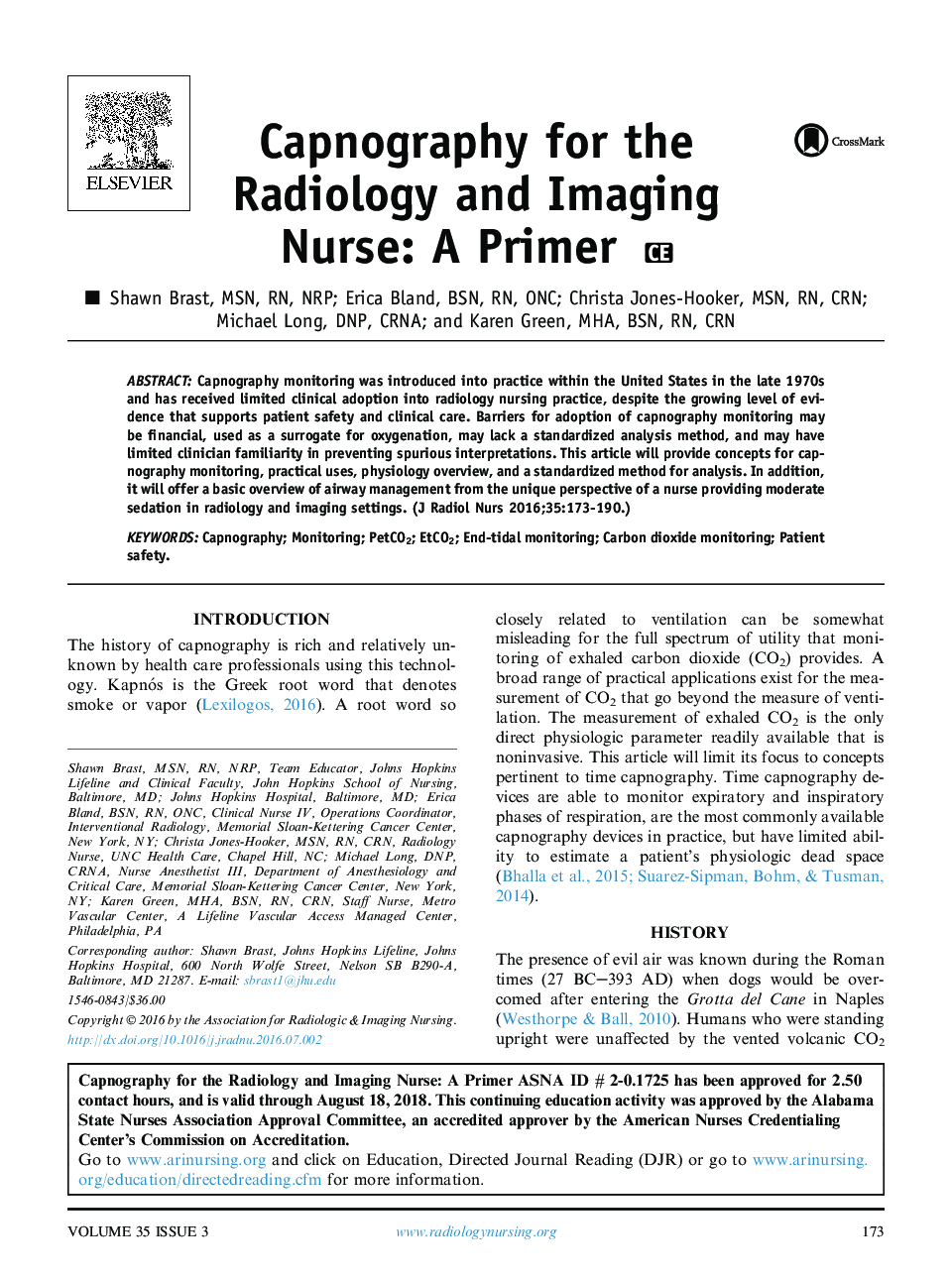| Article ID | Journal | Published Year | Pages | File Type |
|---|---|---|---|---|
| 2673081 | Journal of Radiology Nursing | 2016 | 18 Pages |
•Capnography is underused by radiologic and imaging nurses during procedural sedation.•The use of capnography during procedural sedation enhances patient safety.•A reliance on pulse oximetry as a surrogate monitor for ventilation delays identification of apnea.•Radiology procedure areas have inherent limitations for direct patient visualization.•Effective use of capnography requires a standardized interpretation approach.
Capnography monitoring was introduced into practice within the United States in the late 1970s and has received limited clinical adoption into radiology nursing practice, despite the growing level of evidence that supports patient safety and clinical care. Barriers for adoption of capnography monitoring may be financial, used as a surrogate for oxygenation, may lack a standardized analysis method, and may have limited clinician familiarity in preventing spurious interpretations. This article will provide concepts for capnography monitoring, practical uses, physiology overview, and a standardized method for analysis. In addition, it will offer a basic overview of airway management from the unique perspective of a nurse providing moderate sedation in radiology and imaging settings.
